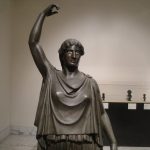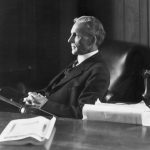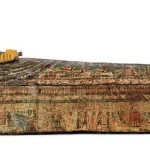The Pince-Nez: A Glimpse into the Past

Related Videos:
In the elegant, gas-lit world of the late 19th century, a new fashion accessory emerged from the shadows of social stigma: pince-nez glasses. Their name, a clever blend of the French words pincer (“to pinch”) and nez (“nose”), perfectly described their unique design. Unlike the modern spectacles we know today, pince-nez had no sidearms; they clung to the bridge of the nose, a symbol of intellectualism and style.

Initially, these glasses were a rare sight, found mainly on the faces of scholars, clergy, and the upper echelons of society. Spectacles were still considered a mark of age and infirmity, but the pince-nez, with its sleek and minimalist design, managed to transcend this prejudice. They were convenient, compact, and could be easily tucked into a pocket or hung from a chain, making them a practical choice for professionals and thinkers on the go.

By the mid-1800s, the pince-nez had spread across continents, gracing the faces of some of history’s most celebrated figures. Mark Twain, Anton Chekhov, and even U.S. President Theodore Roosevelt adopted them, lending the glasses an air of authority and intelligence. Their presence on these influential men solidified the pince-nez’s reputation as a dignified accessory, a quiet declaration of one’s intellect and status.

But like all fashion trends, their reign was fleeting. Between 1900 and 1920, more stable and comfortable spectacles with sidearms began to appear, and the pince-nez’s grip on the public’s imagination began to slip. By the 1930s, they had become a relic of a bygone era, often used in caricatures to represent fussy or overly serious intellectuals.

Today, the pince-nez is rarely seen outside of museums and period films. Yet, they remain a powerful emblem of the Victorian and Edwardian eras. They are more than just a pair of glasses; they are a window into a time when a simple accessory could communicate status, intelligence, and a hint of timeless elegance.











